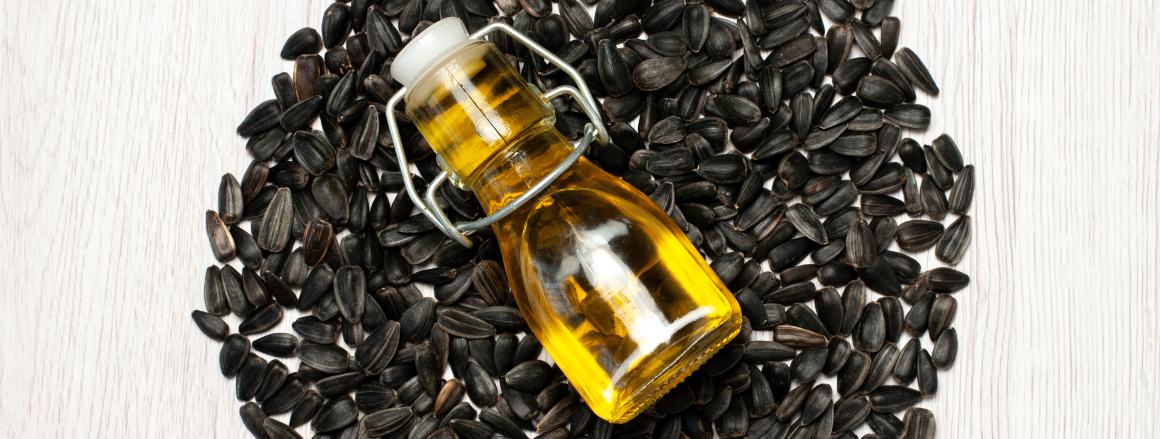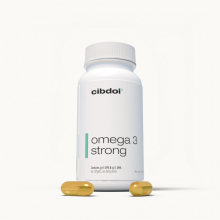What Oil Provides the Most Omega-3 Fatty Acids?
Published:
Omega-3 fatty acids provide many health benefits. Getting enough omega-3s from your diet is crucial. The three main types of omega-3s are ALA, DHA and EPA. Oils that contain omega-3s can be a nutritious addition to the diet. But which cooking oil is actually highest in omega-3?
Contents:
- Overview of Omega-3 Fatty Acids
- Top Health Benefits of Omega-3s
- Recommended Intake of Omega-3s
- Flaxseed Oil: Highest in Omega-3 ALA
- Chia Seed Oil: Also Very High in Omega-3 ALA
- Canola Oil: Moderate Omega-3 ALA Content
- Walnut Oil: Lower in Omega-3 ALA
- Olive Oil: No Significant Omega-3s
- Coconut Oil: No Omega-3s
- Omega-3 Content Comparison of Oils
- Top Sources for EPA and DHA Omega-3s
- Omega-3 Oils Recipes and Uses
- Potential Side Effects of High Omega-3 Intake
- Highest Omega-3 Oils
- What Oil Provides the Most Omega-3 Fatty Acids? Conclusion
Let's compare the omega-3 content of common oils to determine which offers the most omega-3 fatty acids.

Overview of Omega-3 Fatty Acids
Omega-3s are polyunsaturated fats that are important for overall health. There are three main dietary omega-3 fatty acids:
ALA:
- Short for alpha-linolenic acid.
- Found in plant foods and oils.
- Offers cardiovascular and anti-inflammatory benefits.
DHA:
- Docosahexaenoic acid.
- Mainly found in seafood and fish oil.
- Crucial for brain and eye health.
EPA:
- Eicosapentaenoic acid.
- Also primarily from marine sources like fish.
- Supports heart health and mental wellbeing.
Seafood provides EPA and DHA, while plant foods contain ALA. ALA can convert into EPA/DHA, but only in small amounts.
Getting ample omega-3s from both plant and marine sources is important for overall health.
Top Health Benefits of Omega-3s
Here is an overview of some of the ways omega-3 fatty acids benefit the body and mind:
- Reduce inflammation and oxidative stress levels.
- Support healthy aging of the brain and prevent mental decline.
- Improve cardiovascular health and lower heart disease risk.
- Promote eye health and visual development.
- Enhance mental wellbeing and behavior.
- Alleviate joint pain and improve mobility.
- Support neurological and cognitive development in babies and children.
- Help fight autoimmune diseases and reduce symptoms of arthritis.
- Potentially lower risk for dementia, Alzheimer's disease and stroke.
- May help prevent development of certain cancers.
Getting enough omega-3s either from seafood, plant sources like flaxseeds and oils, or supplements is crucial for these wide-ranging health benefits.
Recommended Intake of Omega-3s
Authoritative dietary recommendations for minimum omega-3 intake include:
- 1.1-1.6 grams ALA per day for adults.
- 250–500 mg combined EPA + DHA per day for adults.
- About 8–12 ounces of seafood weekly, providing at least 500 mg omega-3s.
However, many people fall short on getting adequate omega-3s in their diet. Using oils with omega-3s can help increase daily intake.
But which cooking oils actually offer meaningful amounts of omega-3 fatty acids? Let's analyze and compare common oils to find out.
Flaxseed Oil: Highest in Omega-3 ALA
Of all cooking oils, flaxseed oil stands out as by far the richest source of omega-3 ALA:
- Total omega-3 content: Approximately 57% ALA (1).
- Per 1 tablespoon (15ml): Provides ~7,350 mg omega-3 ALA (2).
- Omega-3 benefits: Cardiovascular protection, anti-inflammatory effects.
In fact, flaxseed oil contains the highest percentage of ALA omega-3 fats of any food - over 50% of its fats come from ALA.
The 7 grams of plant-based omega-3 ALA supplied in just 1 tablespoon makes this the highest omega-3 cooking oil.
However, flaxseed oil is not suitable for high-heat cooking due to its low smoke point. Best uses are drizzled on foods or used in salad dressings.
Chia Seed Oil: Also Very High in Omega-3 ALA
While not as abundant as flaxseed oil, chia seed oil stands out for providing high amounts of ALA omega-3:
- Total omega-3 content: Approximately 64% ALA (3).
- Per 1 tablespoon (15ml): ~4,900 mg omega-3 ALA (4).
- Omega-3 benefits: Cardioprotective and anti-inflammatory.
Chia oil provides over 4.5 grams of plant-based ALA omega-3 in just one tablespoon, making it second only to flaxseed oil in omega-3 content.
It has a relatively high smoke point so is suitable for light sautéing in addition to making dressings and drizzling.
Canola Oil: Moderate Omega-3 ALA Content
Compared to flaxseed and chia, canola oil is a moderate omega-3 source:
- Total omega-3 content: About 8-10% ALA (5).
- Per 1 tablespoon (15ml): Roughly 1,300 mg omega-3 ALA (6).
- Omega-3 benefits: Mainly cardiovascular from ALA content.
With a decent omega-3 ALA content of about 10% of total fat, canola oil can add a moderate amount of plant-based omega-3 to dishes and dressings.
Other benefits of canola oil include its high smoke point for cooking, neutral taste, and alpha-linolenic acid (ALA) content.
Walnut Oil: Lower in Omega-3 ALA
Walnut oil contains less omega-3 ALA than canola oil but still provides a small amount:
- Total omega-3 content: Approximately 10-15% ALA (7).
- Per 1 tablespoon (15ml): Roughly 500 mg omega-3 ALA (8).
- Omega-3 benefits: Mainly cardiovascular from ALA.
Walnut oil has one of the highest smoke points of plant oils, so it can be used in light cooking methods.
While not rich in omega-3s, it makes a nice salad oil dressing for a small ALA boost.
Olive Oil: No Significant Omega-3s
Olive oil contains only trace amounts of omega-3 ALA that are negligible:
- Total omega-3 content: Less than 1% (9).
- Per 1 tablespoon (15ml): About 60 mg omega-3 ALA (10).
- Omega-3 benefits: None significant.
The predominant type of fat in olive oil is monounsaturated fat, mostly oleic acid. So it does not contribute any meaningful omega-3 content.
Olive oil is best for its antioxidant and monounsaturated fat content rather than for omega-3s.
Coconut Oil: No Omega-3s
Coconut oil contains medium-chain triglycerides but does not provide any omega-3 fatty acids:
- Total omega-3 content: 0% (11).
- Per 1 tablespoon (15ml): 0 mg omega-3s.
- Omega-3 benefits: None.
Coconut oil consists almost entirely of saturated fats. While it provides benefits like antimicrobial effects, coconut oil cannot be counted on for any omega-3s.
Overall, flaxseed oil clearly stands above other oils for supplying the most abundant omega-3 ALA content.
Omega-3 Content Comparison of Oils
Here is a summary comparison of omega-3 ALA content per tablespoon (15ml) serving of the top cooking oils:
| Oil | Omega-3 ALA Content |
|---|---|
| Flaxseed Oil | ~7,350mg |
| Chia Seed Oil | ~4,900mg |
| Canola Oil | ~1,300mg |
| Walnut Oil | ~500mg |
| Olive Oil | ~60mg |
| Coconut Oil | 0mg |
Top Sources for EPA and DHA Omega-3s
The above oils provide the plant-based omega-3 ALA. However, ALA is not as powerful as EPA and DHA found in seafood.
Here are the best dietary sources for getting beneficial EPA and DHA omega-3 fatty acids:
- Fatty fish: Salmon, mackerel, sardines, herring, trout.
- Other seafood: Oysters, mussels, squid.
- Fish oil supplements.
- Algal oil supplements.
- Grass-fed beef and dairy.
- Pasture-raised eggs.
Aim to eat fatty fish like salmon 1-2 times per week and consider an algal oil supplement for a combined EPA + DHA intake around 250-500 mg daily for optimal health benefits.
Omega-3 Oils Recipes and Uses
Here are some simple ways to incorporate oils with omega-3s into your diet:
Flaxseed Oil
- Salad dressings
- Dips and sauces
- Smoothies
- Supplements
Chia Seed Oil
- Dressings and dips
- Mayonnaise
- Baked goods
- Light sautéing
Canola Oil
- Sautéing
- Frying and roasting
- Salad dressings
- Baking
Walnut Oil
- Salad dressings
- Marinades
- Drizzled over fish, toast, etc.
- Light sautéing
Potential Side Effects of High Omega-3 Intake
While omega-3s are extremely beneficial, very high doses from supplements may cause side effects like:
- Digestive issues: Stomach pains, heartburn, nausea.
- Bleeding risks: Higher at combined doses over 3 grams per day.
- Elevated LDL cholesterol.
- Worsening symptoms of autoimmunity.
Moderation with both diet and supplements is key. Upper limits for supplemental omega-3s are 3 grams combined EPA + DHA daily, with lower amounts suggested for children.
Stick within these conservative upper limits for optimal safety unless medically advised otherwise.
Highest Omega-3 Oils
In summary:
- Flaxseed oil has the highest omega-3 content, providing over 7,000 mg plant-based ALA per serving.
- Chia seed oil is second highest at almost 5,000 mg ALA per serving.
- Canola and walnut oils provide smaller but decent omega-3 ALA amounts.
- Olive oil and coconut oil do not offer meaningful omega-3s.
- For EPA and DHA, eat fatty fish or take marine or algal oil supplements.
- Include omega-3 oils in recipes like dressings, marinades and light sautéing.
What Oil Provides the Most Omega-3 Fatty Acids? Conclusion
Getting enough anti-inflammatory omega-3 fatty acids is important for overall health and wellbeing. Use oils like flaxseed and chia at moderate doses to add extra heart-healthy omega-3 ALA to your diet.
Combine with fatty fish or supplements a few times a week for EPA and DHA omega-3s as well. This combination helps ensure you meet daily omega-3 intake recommendations for gaining their extensive benefits.















